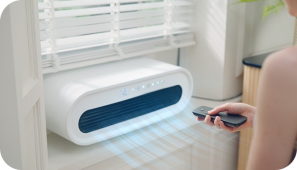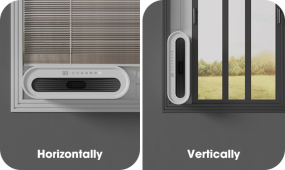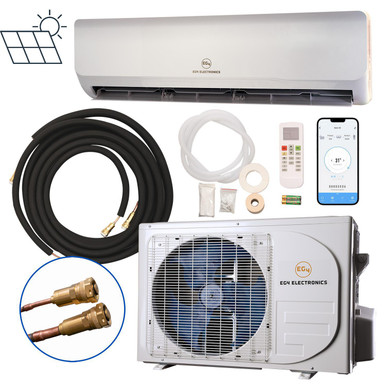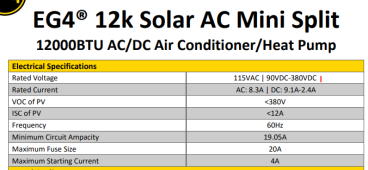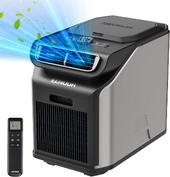thanks for sharing this interesting architecture device. adding pictures because it almost looks like a "micro split"

at 700 usd for 6,500 BTU/hr, it does seem on the more expensive side; the flexible connector would seem to enable more installation options as compared to e.g. midea's U-shaped rigid architecture.
6500 BTU translates to ~1900W of thermal pumping
6500BTU/(3.41BTU/W)
as mentioned, the listed power consumption is 656 Watts
this implies a Coefficient of Performance of about ~2.9, which is much better than 1, but still a bit behind some other devices.
cheers!
Thanks for your input. Im still looking for a practical AC solution for my Honda Odyssey minivan. This is my second odyssey, on my first one last year I had installed a small GE traditional portable unit inside the van, ducted the exhaust out a plywood plate at the side window behind the driver, (well sealed) and added an additional hose to convert the unit to dual hose operation.
It did work, albeit not as well as Id like, probably because it was GEs smallest portable. It was $300 at Lowes.
My biggest issue was the sheer size of it when the dual hoses were included, theres only 147 cu ft of space behind the front seats.
Options I am considering all have roadblocks.
For instance an RV type AC, either 120v or 12v, but every one I have seen seems to have pass through designed for the typical RV ceiling vent, about 14" square. I have less than that on the front-rear direction of the opening for mu sunroof. About 11"x22?
Ive considered another type of portable, industrial spot cooler portables, whereas the unit could sit on a trailer hitch rack, with a generator in a hush box next to it. The output hose could enter the van through a 5" hole cut in the well where the 3rd row seats would normally stow in, which Ive removed. These units are typically about $700.
Its drawback is the sketchy appearance of hanging off a trailer hitch rack.
The unit I posted about above isnt practical because theres no way to route the lines between the only place I could put the outside unit (trailer hitch rack again) and the inside unit. The lines arent removable so cant go through the floor. My van is white and Im tinting all the windows with max solar rejecting film, and its bearable in the shade but thats rare in my pseudo desert city. I wonder if it would be worth trying one of those automatic umbrella-car shade things. May not work real well as it still leaves the van sides exposed.
I still have the vornado window fan i posted about 2 pages back. Great for a fan but on those really hot days only AC will do.






